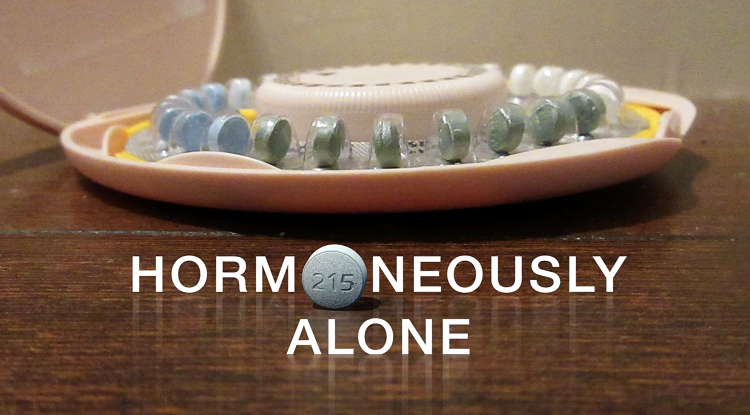Every now and again, I have the great pleasure of stumbling upon truly groundbreaking research. That was the case here. A 2010 study found that the amyloid-beta plaques common in Alzheimer’s and thought to be merely a by-product of some defunct brain process actually may be part of the innate immune system’s response to brain bacteria. It appears that amyloid is an anti-microbial peptide and a fairly potent one at that.
Over the last decade or so, researchers have postulated that Alzheimer’s may be a bacterial, viral, fungal or even a prion infection within the central nervous system (CNS). Nevertheless, most still believe that the amyloid buildup observed in the brain tissue of Alzheimer’s patients is an incidental and pathological marker of the growing disease. This research suggests a little re-thinking of that definition might be in order.
Amyloid is not a pathogenic by-product. It is an innate antibiotic that shares all the characteristics of the other CNS antimicrobials. It has receptors, initiates signal transduction and the cascade of expected immune system reactions against pathogens. More importantly, in direct tests, amyloid acts as an antibiotic against at least eight pathogens from candida (yeast) to streptococcus to staphylococcus, even E coli.
In the case of candida, the amyloid peptide was significantly more potent than the other known, innate CNS anti-infective. Interestingly, the highest density of amyloid and candida was found in the temporal lobe of Alzheimer’s patients. The temporal lobe is the region of the brain responsible for the most troubling cognitive deficit of Alzheimer’s, the memory disturbances, and the most severely damaged region as the disease progresses.
This research opens some entirely new directions in Alzheimer’s research. Could Alzheimer’s be related to body infections that somehow cross the blood brain barrier? Are there environmental factors that make the blood brain barrier more permeable to infection or other toxins? In our efforts to block the amyloid build-up, the target of many Alzheimer’s drugs, are we blocking the immune system’s ability to fight an infection? And certainly, by the time the amyloid plaques are visible, it is safe to assume that the infection and immune response have been on-going for years, are there markers that we have missed that appear much earlier on?
As a woman, I was most intrigued by the candida connection because 75% of all women will experience at least one yeast infection across their life time and 40% will experience more frequent infections. Some researchers suggest that chronic yeast infections caused by host immune deficiency are on the rise. Moreover, there is speculation that the high-sugar western diet and the over-use of antibiotics are to blame.
Despite this increase in yeast hyper-sensitivity in the gut and elsewhere in the body, brain or neuro-candida has been considered fairly rare and often fatal, at least in its acute stage. Indeed, it is rather difficult for most toxins to cross the blood brain barrier at all. So it is all the more striking that these researchers identified temporal lobe candida in Alzheimer’s patients and that it had likely been there chronically as evidenced by time-frame of the immune response required to create the visible amyloid plaques.
Perhaps, a more chronic, lower- intensity candida infection reaches the CNS and is almost but not quite battled successfully by the body’s innate immune system – the amyloid. Over time the innate immune system mounts a stronger and stronger defense until the very defense mechanisms begin to cause the problems we see as invasive amyloid plaques of Alzheimer’s. Interesting possibilities.
The full study: The Alzheimer’s Disease-Associated Amyloid β-Protein Is an Antimicrobial Peptide
This article was published originally on April 8, 2013. Since then there have been dozens of studies pursuing this possibility. A great review: Functional Reciprocity of Amyloids and Antimicrobial Peptides: Rethinking the Role of Supramolecular Assembly in Host Defense, Immune Activation, and Inflammation.
We Need Your Help
More people than ever are reading Hormones Matter, a testament to the need for independent voices in health and medicine. We are not funded and accept limited advertising. Unlike many health sites, we don’t force you to purchase a subscription. We believe health information should be open to all. If you read Hormones Matter, like it, please help support it. Contribute now.
Yes, I would like to support Hormones Matter.
Image source: National Institutes of Health (NIH); CC 4.0.












Alzheimer’s disease (AD) patients exhibit neuroinflammation consistent with infection, including microglial activation, inflammasome activation, complement activation, and altered cytokine profiles. Infectious agents have been found in the brain and postulated to be involved with AD.
Porphyromonas gingivalis, the keystone pathogen in chronic periodontitis, was identified in the brain of Alzheimer’s disease patients. Toxic proteases from the bacterium called gingipains were also identified in the brain of Alzheimer’s patients, and levels correlated with tau and ubiquitin pathology.
P. gingivalis is mainly found during gingival and periodontal infections; however, it can also be found at low levels in 25% of healthy individuals with no oral disease. Transient bacteremia of P. gingivalis can occur during common activities such as brushing, flossing, and chewing, as well as during dental procedures, resulting in documented translocation to a variety of tissues including coronary arteries, placenta, and liver. A recent study found that 100% of patients with cardiovascular disease had P. gingivalis arterial colonization.
It has been hypothesized that P. gingivalis infection acts in AD pathogenesis through the secretion of gingipains to promote neuronal damage. It has been found that gingipain immunoreactivity (IR) in AD brains was significantly greater than in brains of non-AD control individuals. In addition, P. gingivalis DNA has been identified in AD brains and the cerebrospinal fluid (CSF) of living subjects diagnosed with probable AD.
Yes, and one of the disease is called lyme disease or syphilis’s dumb cousin and quite possibly chronic active toxoplasmosis. The other issue is the numerous use of MRI’s with gadolinium (a heavy metal) contrast which is all over pubmed describing how gadolinium causes destruction of mitrochondria. Gadolinium has been also known to have its “cousins” other lanthanides conaminated in gadolinium contrast. Look up gadolinium toxicity or “metallosis” on pubmed. If I am censored, then I am over the target.
https://www.youtube.com/watch?v=Fr61GV8JCYQ
https://www.youtube.com/watch?v=MEC6hTPmJG4
https://www.youtube.com/watch?v=HE22tUG38iI
https://www.youtube.com/watch?v=uofRi2bn9sk